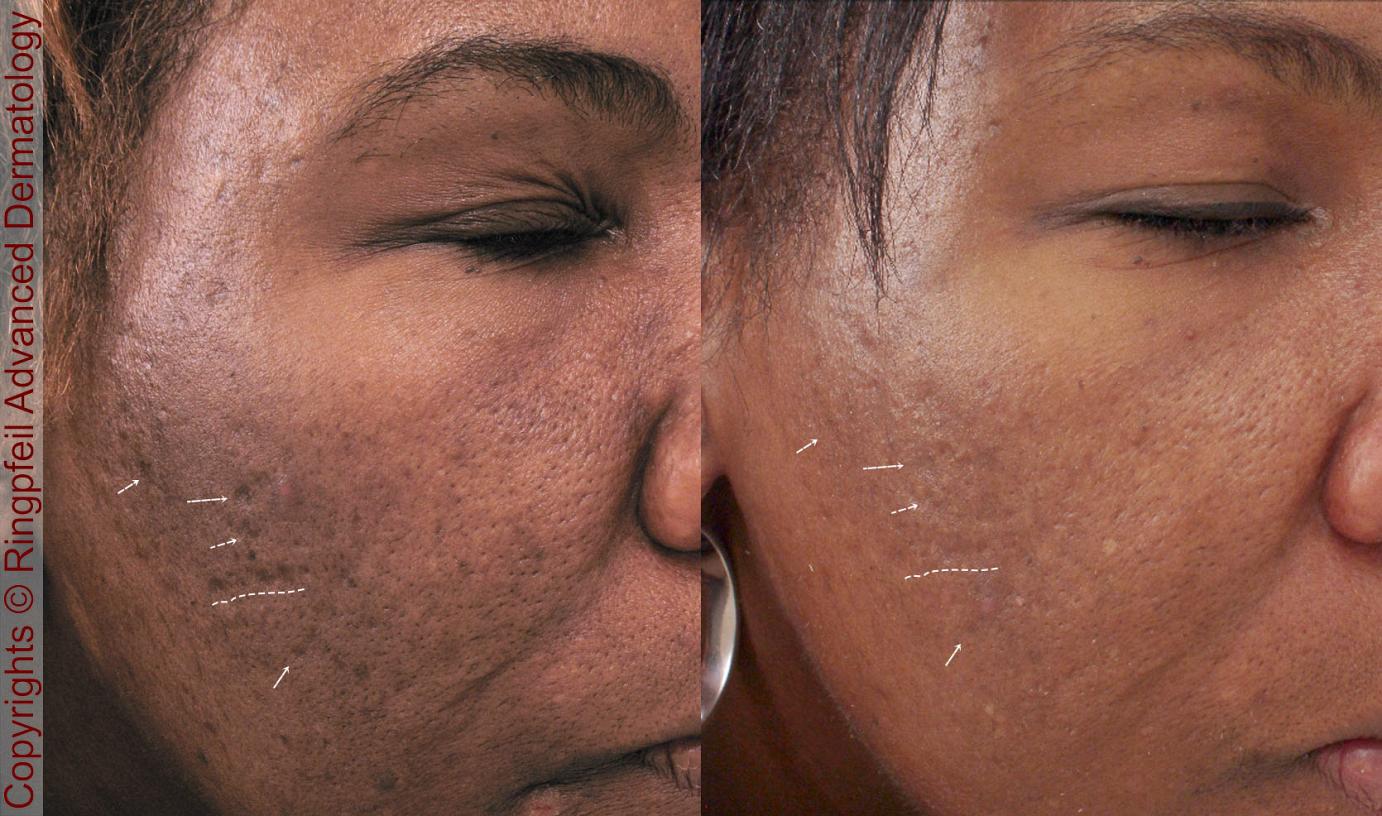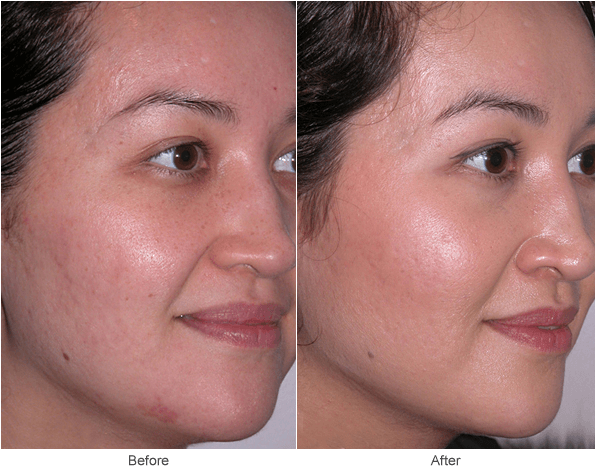Skin Rejuvenation Treatments: The Ultimate Overview to Revitalizing Your Skin
Skin Rejuvenation Treatments: The Ultimate Overview to Revitalizing Your Skin
Blog Article
Recognizing the Different Skin Disease and Efficient Therapy Alternatives for Acne Marks
Acne scars stand for an intricate interplay of skin disease that substantially effect people' self-worth and total skin health. Comprehending the unique kinds of acne marks-- atrophic and hypertrophic-- alongside their underlying causes, is critical for identifying effective treatment techniques. Numerous therapeutic options exist, varying from innovative dermatological treatments to all-natural treatments. Nonetheless, the efficacy of these therapies frequently depends upon individualized analyses by certified specialists. As we check out the landscape of acne scar management, it ends up being noticeable that the journey towards clearer skin may entail greater than just topical services.
Kinds of Acne Marks

In contrast, hypertrophic marks result from an overflow of collagen during the recovery procedure, resulting in elevated locations on the skin. These scars are commonly firm and can differ in color, sometimes appearing red or darker than the surrounding skin.
Comprehending these sorts of acne marks is essential for developing an effective treatment strategy - acne scars. Alternatives might include chemical peels, laser treatment, microneedling, or facial fillers, customized to the certain scar kind. A thorough appointment with a dermatologist can help establish one of the most appropriate treatment, thinking about the person's skin kind, mark seriousness, and general skin health
Root Causes Of Acne Scarring
Marking happens as a result of the body's all-natural healing response to swelling and injury brought on by acne lesions. When acne types, it sets off an inflammatory feedback, causing the launch of different cytokines and development elements that promote healing. However, this process can occasionally lead to too much cells formation or poor repair, resulting in scars.
The primary root causes of acne scarring include the intensity of the acne itself, duration of the lesions, and specific skin kinds. Severe inflammatory acne, such as blemishes and cysts, is more most likely to lead to scarring because of much deeper cells damages. Additionally, improper handling of acne lesions, such as picking or pressing, can worsen tissue injury and swelling, increasing the likelihood of scarring.
Hereditary proneness likewise plays a considerable function; people with a family members background of scarring are at a higher risk. Skin type and color can influence scar formation, as darker skin tones might experience post-inflammatory hyperpigmentation, while lighter skin might develop atrophic marks.
Eventually, recognizing these causes is crucial in handling acne and minimizing the possibility for scarring.

Therapy Options for Scarring
Effective treatment options for acne scarring vary depending on the type and extent of the scars. Generally classified right into atrophic, hypertrophic, and keloid marks, these problems need tailored strategies for optimum outcomes.
For atrophic marks, which are identified by a loss of tissue, therapies such as chemical peels, microdermabrasion, and laser treatment are commonly utilized. These approaches advertise skin renewal and boost collagen production, thereby boosting skin texture. Subcision, a minimally invasive procedure, can likewise work by separating coarse bands beneath the skin.
Hypertrophic and keloid scars can be much more challenging to treat. Alternatives include corticosteroid shots to reduce swelling and flatten the scars. In many cases, cryotherapy or laser treatment might be suggested to minimize their look.
Surgical options are readily available for serious scarring, where excision or skin grafting might be required. It's essential for people to consult with a dermatologist to analyze their certain scar type and review one of the most appropriate treatment strategy. Integrating several therapies often generates the very best end results, guaranteeing that each patient's unique skin problem is dealt with effectively.
Home Treatments and All-natural Solutions
All-natural solutions and natural home remedy can offer an available approach for people seeking to improve the appearance of acne scars (acne scars treatment). Various ingredients located in the home cooking area have actually demonstrated potential advantages in enhancing skin appearance and promoting recovery

One more effective alternative is lemon juice, which works as a natural exfoliant and can lighten hyperpigmentation. It should be made use of carefully, as it may trigger photosensitivity. Oat meal masks are also valuable; their mild exfoliation can assist remove dead skin cells while soothing irritability.
Vital oils, such as tea tree oil and lavender oil, can additionally support scar recovery due to their antimicrobial properties. It is important to do a patch test prior to applying any kind of remedy to guarantee there are no unfavorable reactions. These natural options can be a complementary approach in the journey to decrease acne scars.
Avoiding Future Scarring
Adopting a proactive approach to skincare can considerably lower the risk of establishing future acne scars. Among the vital methods is to manage acne successfully as it occurs. This involves making use of non-comedogenic skin care products and medications recommended by dermatologists that target acne without irritating the skin. Regular cleansing, exfoliation, and hydration can aid maintain skin health and prevent clogged site here pores.
In addition, preventing the temptation to squeeze or pick acne lesions is vital, as this can result in swelling and succeeding scarring. Rather, individuals ought to concentrate on applying topical therapies that promote healing and minimize swelling. Components such as salicylic acid, benzoyl peroxide, and retinoids are known for their effectiveness in taking care of acne and lessening marks.
Sunlight security is another essential element; exposure to UV rays can dim scars and hinder recovery. Using a broad-spectrum sun block daily can minimize these effects.
Lastly, maintaining a healthy diet plan abundant in antioxidants and staying hydrated supports skin regeneration. By implementing these preventive measures, people can considerably lower their danger of future scarring and promote overall skin wellness.
Conclusion
In verdict, an extensive understanding of acne marks, including both hypertrophic and atrophic kinds, is necessary for efficient treatment techniques. great site Consultation with a skin specialist stays important to create individualized methods that think about private skin types and mark intensity, eventually enhancing the efficiency of mark monitoring methods.
Acne marks stand for a complicated interaction of skin problems that dramatically effect individuals' self-esteem and overall skin health and wellness. The two primary categories of acne scars are hypertrophic and atrophic marks. These marks are further identified into 3 subtypes: ice pick scars, which are deep and narrow; boxcar marks, which are broader and have distinct edges; and rolling marks, which develop a wave-like look due to uneven skin texture.
A comprehensive consultation with a skin specialist can aid identify the most suitable intervention, taking into account the person's skin type, mark seriousness, and general skin health.
Consultation with a skin specialist stays imperative to design personalized approaches that take into consideration individual skin types and scar severity, eventually improving the effectiveness of scar monitoring methods.
Report this page